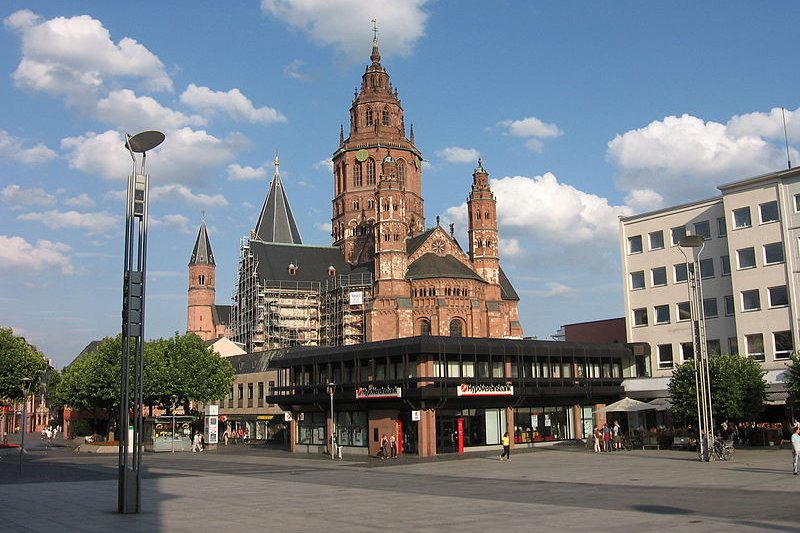 Mainz Cathedral
Mainz CathedralSource: https://commons.wikimedia.org/wiki/File:Cathedral_%28Mainz%29_3.jpg
Author: Michiel1972

Mainz is the capital of the federal state of Rhineland-Palatinate in Germany. It covers 97.75 sq km (37.74 sq mi) and has a population of around 200,000 people (2011 estimate). It observes the Central European Time (UTC+1) and in summer the Central European Summer Time (UTC+2).
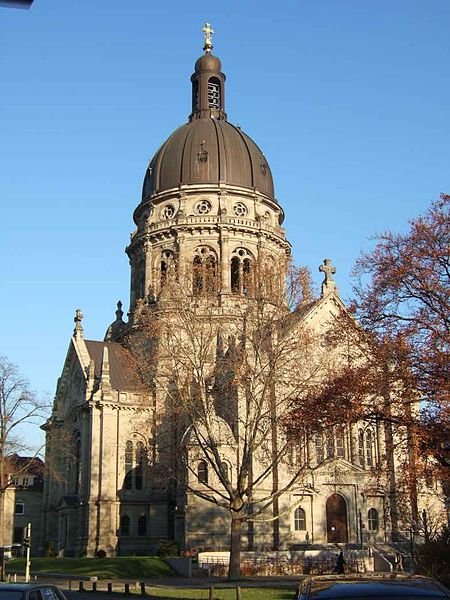 Christuskirche, Mainz
Christuskirche, MainzSource: https://commons.wikimedia.org/wiki/File:Christuskirche_mainz_aus_west.jpg
Author: Trolinus

Mainz is located on the west bank of the river Rhine, across the river from Wiesbaden, the capital of Hesse. It is part of the Rhein metropolitan area, which includes Frankfurt am Main and has a total population of 5.8 million people. The city experiences an oceanic climate. Warmest month is July, with average high temperature of 23.89°C (75°F). Coldest month is January, when the average temperature drops to -1.22°C (29.8°F). June is the wettest month, with 58 mm (2.3 in) of precipitation.
The history of Mainz goes back to Roman times, when the Romans erected a fortification here called castrum Mogontiacum around 13 BC. It is from this name, Mogontiacum, which is in fact of Celtic origin that we get Mainz.
After the fall of the Roman Empire, the Franks ruled to fill the vacuum. The leader of the Franks is Charlemagne (768-814), who established a new empire, the Holy Roman Empire. By then, there were already some Christian converts in Mainz, but by the Middle Ages, the city became the center for the Christianization of the German people. Archbishops of Mainz play an influential role in the Holy Roman Empire. They were the archchancellors of the empire right up to the demise of the empire in 1806.
Mainz fell under French control after it was captured by Napoléon Bonaparte in 1797. However, a series of defeats forced Napoléon to pull out of Mainz in 1814. Two years later Mainz became a provincial within the state of Rhenish Hesse. The city was occupied by French forces after the First World War, from 1919 to 1930. The withdrawal of the French in 1930 provided the Nazis under Adolf Hitler the opportunity to move into Mainz. Thus began the systematic discrimation of the Jewish population of the city. The Bishop of Mainz is credited with helping the Jews escape out of the country.
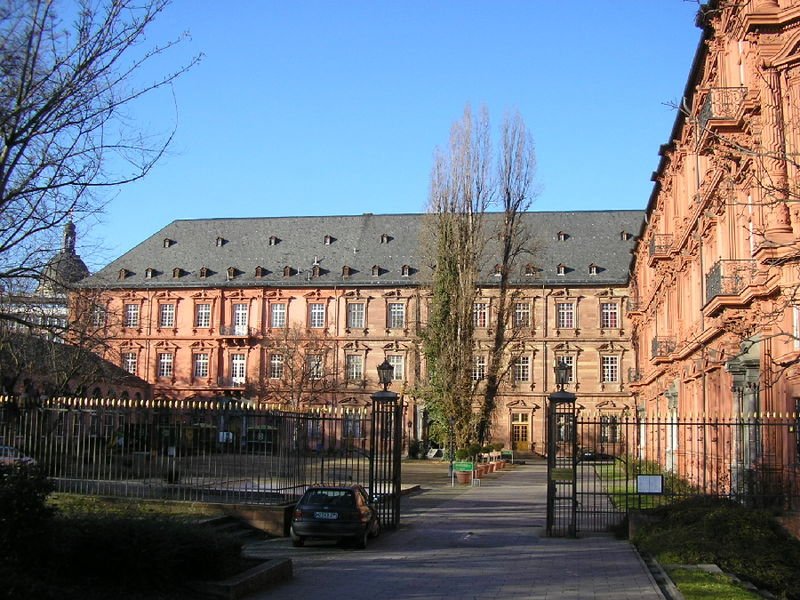 Kurfürstliches Schloss, the Palace of the Prince-elector, in Mainz
Kurfürstliches Schloss, the Palace of the Prince-elector, in MainzSource: https://commons.wikimedia.org/wiki/File:Kurfuerstliches_Schloss_Mainz_Innenhof.jpg
Author: Moguntiner

The Second World War devastated 80% of Mainz's city center. It was part of the French zone of occupation after the war, and was made the capital of Rhineland-Palatinate when the federal state was formed on 30 August, 1946.
Perhaps the most famous person to come from Mainz is Johannes Gensfleisch zur Laden zum Gutenberg (1398-1468), who invented the movable type, and is associated with printing the Gutenberg Bible, of which 47 or 48 copies still exist today.
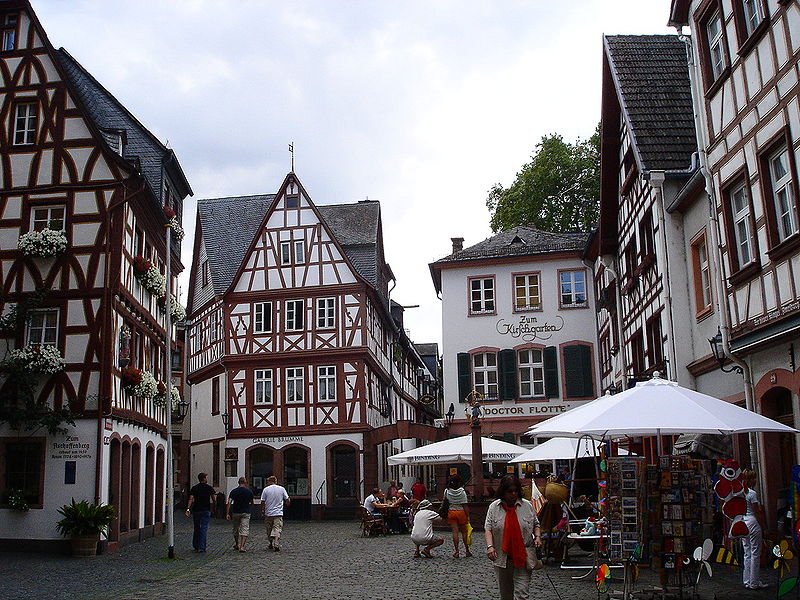 Kirschgarten, Mainz
Kirschgarten, MainzSource: https://commons.wikimedia.org/wiki/File:MzKirschgarten.jpg
Author: Theodoranian

Visiting Mainz
From Frankfurt Airport, take the S-Bahn regional train directly from the airport subway station. The S8 local train goes to the Mainz Main Railway Station (Mainz Hauptbahnhof).Places of Interest in Mainz
- Gutenberg-Museum
Museum showcasing the printing process invented by Johannes Gutenberg, home to two incomplete copies of the Gutenberg Bible. - Gutenbergplatz
City square with paving stone marking the 50th parallel. - Mainz Cathedral
Magnificent Romanesque cathedral, one of only three to survive almost intact (the others being those at Speyer and Worms). - Kirche St Stephan
Parish church dating back to the mid 13th century. - Kirschgarten
Street through one of the most charming parts of Mainz. - Kurfürstliches Schloss
Baroque Electoral Palace was started under Archbishop Georg von Greifenclau and completed a century later. It today houses the Museum of Roman and Germanic history (Römisch-Germanisches Zentralmuseum). - Römersteine
Remains of a Roman aqueduct from the 1st century AD.
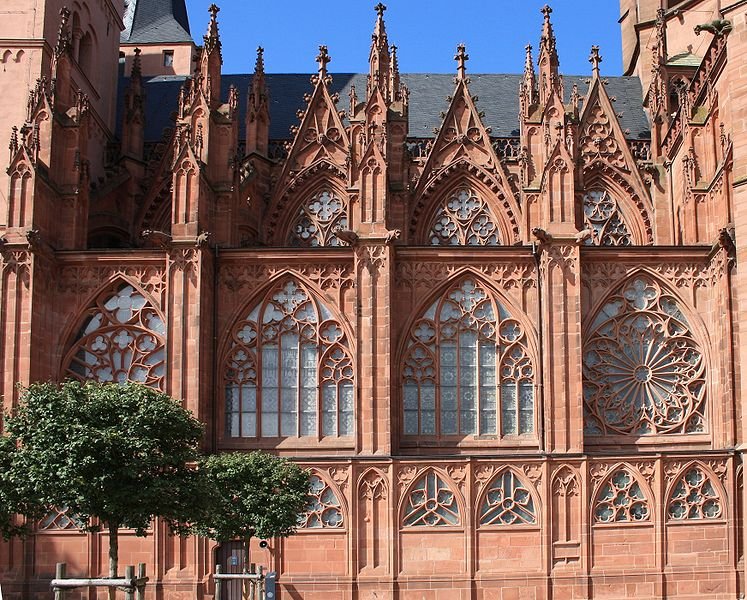 Katharinenkirche, Oppenheim
Katharinenkirche, OppenheimSource: https://commons.wikimedia.org/wiki/File:0ppenheim_Katharinenkirche_Suedfassade.jpg
Author: Patrick-Emil Zörner

Nearby Sights
- Oppenheim
Village located 12 miles south of Mainz, with its lovely Katharinenkirche, a church in red sandstone.
 Latest updates on Penang Travel Tips
Latest updates on Penang Travel Tips
 Discover with Timothy YouTube Channel
Discover with Timothy YouTube Channel
 PG Food Channel
PG Food Channel
 Learn Penang Hokkien YouTube Channel
Learn Penang Hokkien YouTube Channel
 SojiMart Videos
SojiMart Videos
Latest from Discover with Timothy: Gurney Bay - what to see and do there
About this website

Hello and thanks for reading this page. My name is Timothy and my hobby is in describing places so that I can share the information with the general public. My website has become the go to site for a lot of people including students, teachers, journalists, etc. whenever they seek information on places, particularly those in Malaysia and Singapore. I have been doing this since 5 January 2003, for over twenty years already. You can read about me at Discover Timothy. By now I have compiled information on thousands of places, mostly in Peninsular Malaysia and Singapore, and I continue to add more almost every day. My goal is to describe every street in every town in Malaysia and Singapore.
Robbie's Roadmap
- Episode 1: Robbie's Journey to Financial Freedom
- Episode 2: Lost in America
- Episode 3: The Value of Money
- Episode 4: The Mentor
- Episode 5: The Thing that Makes Money
- Episode 6: The walk with a Billionaire
- Episode 7: The Financial Freedom Awakening
- Episode 8: Meet Mr Washington
- Episode 9: The Pizzeria Incident
Copyright © 2003-2024 Timothy Tye. All Rights Reserved.


 Go Back
Go Back